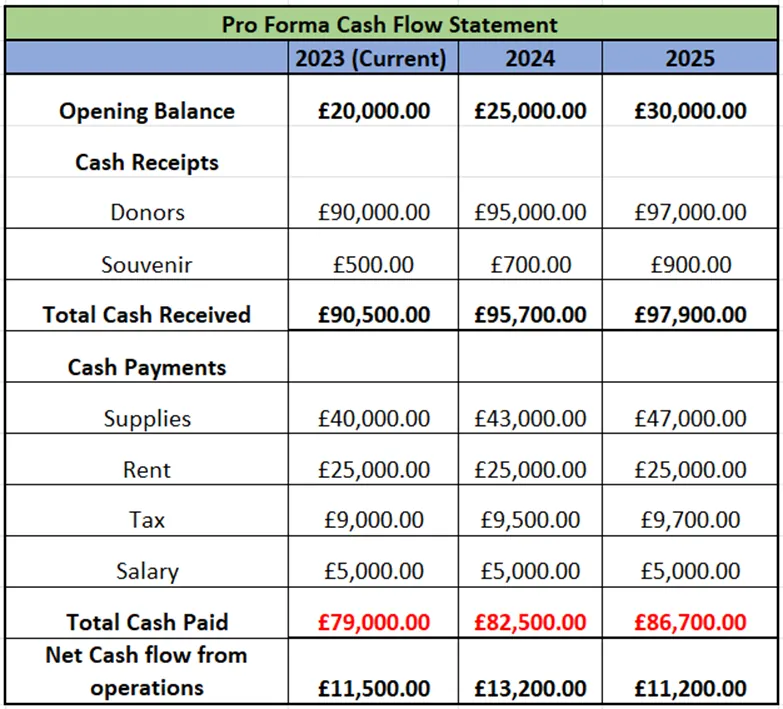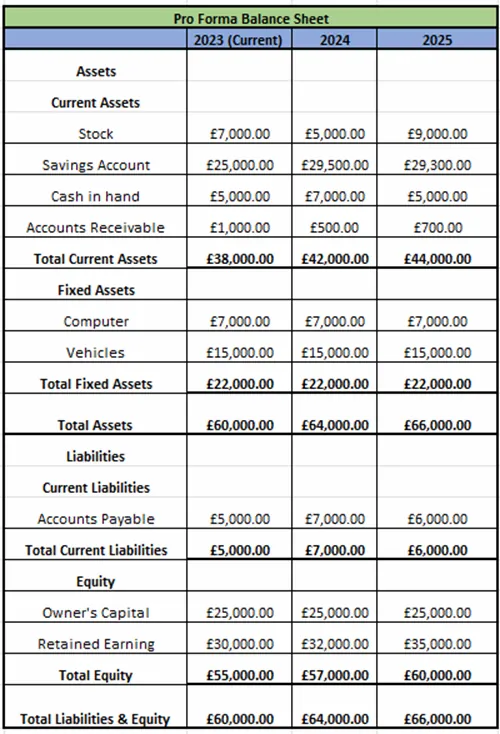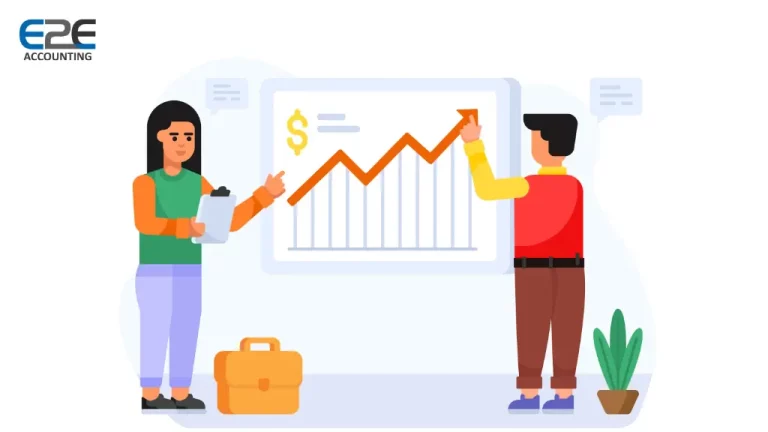How far is your range of vision for your business? Simply grabbing green economy opportunities? Investment in new capital expenditure? Dominate the world through expansion at various locations?
Either way, gathering accurate financial insights and projections for your small and medium-sized business is necessary. It will help you adequately plan your future. Financial Forecasting (Projections) will also help you understand every step leading to the growth of your business and hit those desired numbers you wish.
Financial forecasting will provide the glimpses essential for your business’s survival and growth. Based on these insights, you can make predictions for the future of your business, which you can hold. So, it is necessary to have forecasting at the top of your mind, whether your business is a startup or SME.
What is Financial Forecasting?
None of the business owners can predict the future of their business. But there are steps that you can take to prepare your small and medium-sized business for this unforeseen business landscape. For a precise overview of your financial affairs, one of the reliable options is to create projections/ forecasts.
Forecasting will help you look into your business’s historical and present performance as well as current market trends. With the help of this data and examining it effectively, you can predict the future performance of your finances. You can also gauge the revenue you can earn during a particular period and manage your expenses efficiently.
Forecasting involves a small number of assumptions and guesswork since unforeseen factors can influence your business performance. But through strategic planning, budgeting, and predictions, you can maintain your mindset focused on the future of your business.
I do prepare budgets; is it different from forecasting?
Though budgeting and forecasting go hand in hand, they are two different aspects. Preparing budgets means keeping aside some money for certain costs, considering your income and expenses. Your budgets are based on the information derived from your financial forecasts.
Forecasting is predicting the future, and budgeting is planning for the future. When you prepare your financial forecast, you get insight into which direction your business will head based on your historical performance and several other factors. At the same time, budgeting will help you to spend effectively on how and what you expect your financial position to look like in the future.
For example, suppose you forecast to earn additional revenue of £1,00,000 in the next year. In that case, you will prepare a budget for how much you will spend to earn that revenue. Say you will keep aside £10,000 for advertising, £20,000 for stock, etc.
Accurate forecasting can help you make stable business plans, acquire potential investors and external funding sources such as loans and lines of credit, make informed business decisions, and prevent surprise tax bills, as per the Authors Kaplan, Steven N., and Richard S. Ruback, in their journal article on “The valuation of cash flow forecasts: An empirical analysis.” But to achieve this, you must prepare “Pro forma financial statements.” Financial predictions are concrete only through Pro forma financial statements.
What are the methods used for forecasting?
You can use two standard methods to forecast your business finance: Qualitative and Quantitative. But which way is more viable for you depends on how long you have been in business. Besides these two methods, it is also necessary to prepare pro forma statements.
- Qualitative forecasting: Qualitative forecasting, also known as Research-based forecasting, is the method wherein you make business predictions without analyzing your historical data. Generally, this method of forecasting is advisable for new businesses wherein they need more historical data (sales and expenses), and such companies highly rely on the judgments of accountants or financiers who prepare the forecast for them.
- Quantitative forecasting: Quantitative forecasting, also known as historical forecasting, is the method wherein you make business predictions only after analyzing your historical data. Thus, with the help of measurable data, you can gauge the growth of your business. This method is more commonly recommended for short-term forecasting. Yet this method will also include a little bit of research to create a realistic and valuable forecast.
What are Pro forma financial statements?
Pro forma financial statements are similar to your financial statements, only that you use every month to analyze the performance of your business. The only difference between both statements is that pro forma statements are prepared for the future months and years, and the financial statements are for the current period.
Pro forma statements are of three types, which you are already familiar with
- Income statement
- Cash flow statement
- Balance sheet
The period covered in the pro forma statements depends on your goals and how long you plan to forecast. If you want to forecast the next six months for a particular project, you will create a pro forma statement covering six months to a year in the future.
But if you are planning to meet a potential investor for financial aid, you must prepare your pro forma statements covering the next three to three years.
How do you create pro forma statements?
Before starting to create pro forma statements, you must set your projected goals clearly towards the period you are looking at.
Pro forma income statement
So, if you are preparing a pro forma income statement, you must be clear about the sales you are targeting to achieve. For example, if your current year’s sales are £50,000, and you want to make sales of £1,00,000. Therefore, your total increase in sales will be £50,000.
Thus, you need to set your production schedule in such a way that it will help you reach your target and map it over the period in which you are aiming to cover. Since this sales target is 12 months, you will map out a £50,000 increase over the 12 statements. It could be done either by increasing it based on the fixed amount or increasing it gradually every month, based on your instincts and experience.
Accordingly, you will also calculate your COGS (Cost of goods sold) for all the months and reduce it from your sales. Similarly, you will also deduct other operating expenses. Remember to take each and every expense into account for making accurate projections, be it quarterly or half-yearly.
Once all the income and expenses are done, you will arrive at your profit or loss, and your pro forma statement will give you an insight into your expected earnings and spending for the desired period.
Example of Pro Forma Income Statement
Tony’s Logistics

Pro forma Cash flow statement
Creating a pro forma Cash Flow Statement is similar to making a regular cash flow statement only. So, you consider all the details from your income statements and use them in the cash flow statement to determine where and how much your money is going.
Thus, the cash flow you have projected will give you insights into a few things, such as negative cash flow, which means you do not have enough cash to run your business based on your current trajectory. So, it would be best to borrow the money and pay off your expenses. At the same time, positive cash flow means that you have surplus cash in hand for paying off your loans and savings for investments.
Example of Pro Forma Cash Flow Statement
New Wales Care Home Centre

Pro forma Balance Sheet
The info derived from the income statement and cash flow statement; you can easily prepare a pro forma balance sheet. But the critical aspect here is that you also need to consider your previous balance sheets through which you can use all your balances. The pro forma balance sheet will project all the changes in your accounts over the period, and you can plan from where you have the money and when you have to move the money.
Example of Pro Forma Balance Sheet
Kate Florist

Revisiting the Forecasts
More than creating the pro forma statements and preparing forecasts is required. You can’t sit back and relax. The most important is the second stage of financial forecasting. You now have to revisit and record your actuals with your forecasts and compare each month to the period you have done forecasting.
We at E2E Accounting believe that only when you revisit your forecast details will you learn whether your forecast is way off or not.
For example.
- In some months, if the sales were lower than expected, you can take notes on the reasons for low sales. Whether the inventory forecast was inappropriate, or there were changes in the demand, or any miscommunication with the suppliers, etc.
- If the revenue was higher than forecasted, you can note what boosted the income, whether it was seasonal or any other reason.
Thus, revisiting and taking notes will help you provide valuable insights into your business to improve your forecasting each time than the last one.
Below are the few strategies that we recommend:
- Timings of the forecast: Timings are one of the essential aspects of forecasting. How far you must look depends on your business and its characteristics. You must break down your forecasts over the period, say a year, three years, or five years.
- Regular updating: You must also regularly revisit and update the forecasts prepared. It will help you get the complete picture of your business.
- Keeping track every month: Keep track of your revenues and expenses every month to forecast your revenues, how much sales are taking place, what your expenses are, and whether any contractual obligations are involved. Which item will lead to higher expenditure, and whether any future obligations will take place?
Conclusion
Businesses experience ups and downs; what truly matters is your ability to consider all potential scenarios for your business. It’s impossible to predict everything, so it’s always best to forecast for all possible scenarios: regular, moderate, and worst.
According to E2E Accountant, forecasting is as much as preparing the household budget. Just like you prepare a budget for your household expenses and savings, every SME must also forecast similarly. You must know which forecasting method best suits your small and medium-sized business.
Ultimately, the stronger your forecast, the more effectively you can strategize for your business’s future, adapt to changing circumstances, and impress your investors and lenders.
We at E2E Accounting can help you create financial forecasts for your business using software that can help you make effective decisions that can lead you to growth and stay ahead of your competitors. By outsourcing your Management Accounting needs to E2E Accounting, you can be assured that all your financial reports, budgets, and forecasting are accurate while freeing time for other essential tasks!

